From Thyborøn we ventured out into the North Sea and down the west Jutland coast.
This is basically 170nm of sandy beach backed by sand dunes. The waters off are very shallow and notorious in strong on-shore winds, when the few harbours are not safe to enter.
The fine sand gets suspended in the water, even in relative calm, and drifts about in yellow streaks.
Once there were several fjords on this coast but the entrances became silted up with the shifting sands, cutting them and their ports off from the sea. Canals have been dug at Thyborøn, Thorsminde and Hvide Sande to reconnect the fjords, but keeping them open is an on-going task with continuous dredging.
We stopped first in the sleepy fishing port of Thorsminde, where water is sluiced out of the Nissum Fjord on every ebb to keep the entrance open. The port itself has been built behind the sand dunes. We noted the Museum St George, recording the numerous stranding and wrecks on this coast. Notably the British warship HMS St George and her escort HMS Defense were on their way back from the Baltic when they were stranded on Christmas Eve 1811 with the loss of 1,400 souls.
From Thorsminde we sailed to Hvide Sande where water is sluiced out of the Ringkøbing Fjord. Hvide Sande has become a significant port and base for offshore operations, as well as a holiday centre. Here we were able to lock through into the Ringkøbing Fjord – an extensive lagoon of 300 square km of shallow waters with maximum depths of ~3m. While a channel has been dug to the town of Ringkøbing, we made good use of our lifting keel to sail in waters where few yachts can venture. We had a pleasant interlude and night anchored in the north west corner before running for Ringkøbing itself.
Ringkøbing
Ringkøbing dates from the 13C when it prospered as the only good port on the west coast. In the 17C its fjord was gradually cut off from the sea until the beginning of the 20C, when the new channel at Hvide Sande was dug.
We arrived on mid-summers day and the start of the Ringkøbing “1700” festival, which celebrates Ringkøbing in its heyday. There were lots of people in period costume. Craft fairs teach old skills to children – smithing, rope making, candle making, wool carding (with sheep and goats in attendance) etc. A militia fired off muskets and a very loud cannon.

Teaching crafts on quayside 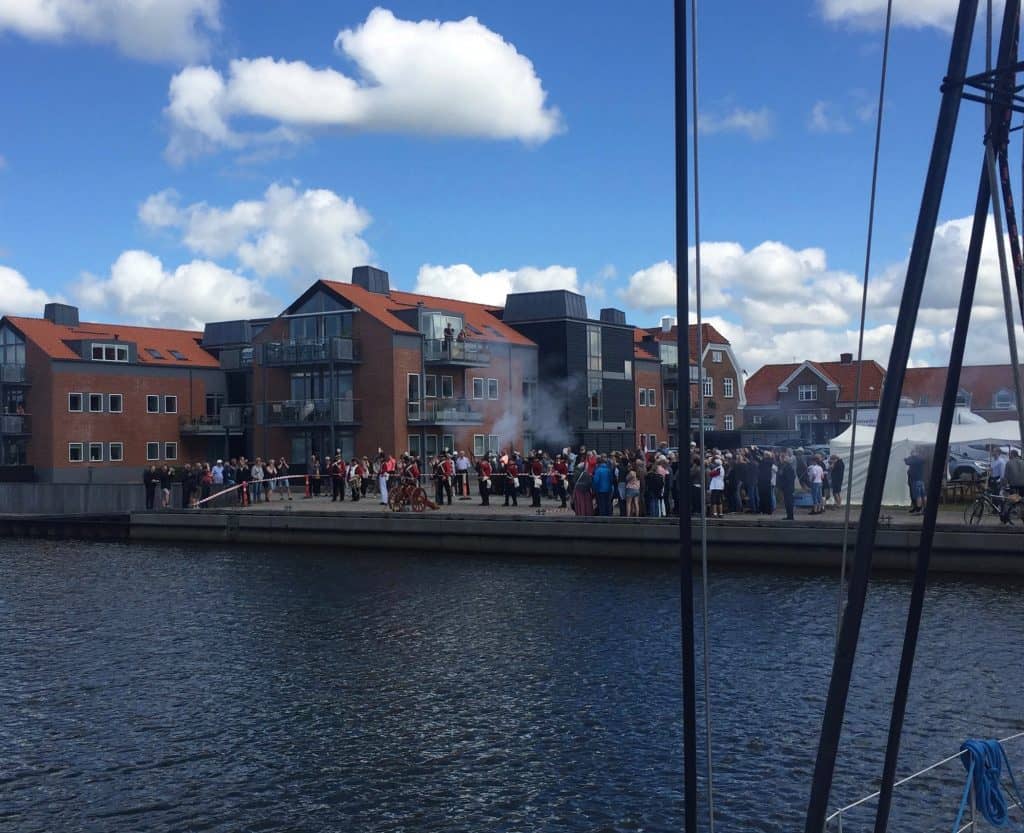
Musket firing 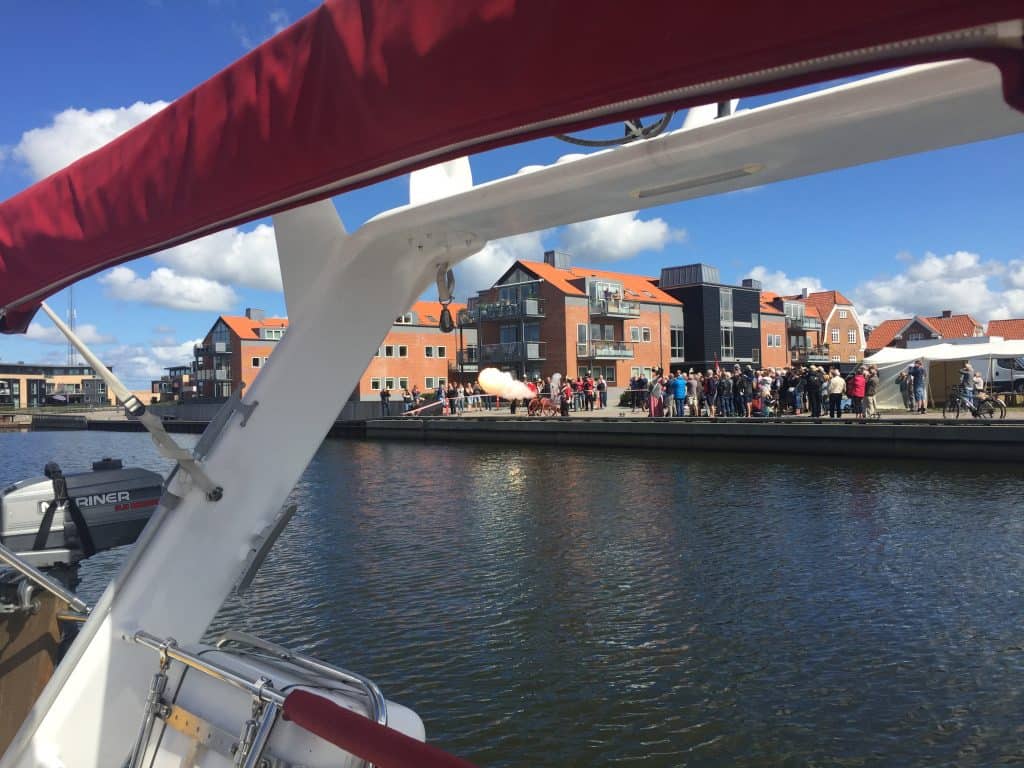
Cannon across Antipole’s stern
In the summer months a night watch, in the style immortalised by Rembrandt, patrols the town, suitably fortified from their base in the Ringkøbing Hotel.
We enjoyed cycling the paths bordering the fjord and we went as far as Søndervig in the northern bay, which comprises lots of holiday chalets nestling in the sand dunes behind the North Sea. It reminded us both of childhood holidays – for Tony, Hemsby during the 1950s & 60s and for Ynskje the Dutch dunes.
Denmark marks mid-summer not on 21st June but on the eve of St John the Baptist’s Day, which is on 24th June. Bonfires are lit – said to ward off evil spirits. These days the effigy of a witch is burnt – a link back to rather unfortunate times. We warmed ourselves on the fire by the harbour and could see other fires all round the fjord.
Stauning
From Ringkøbing we sailed 13nm south to the tiny port of Stauning, which is reached by a long trench dredged out of the very shallow (~0.3m) water leading through extensive reed beds. We were only able to get in there because of our lifting keel and rudder. Locals said we were the largest yacht to have visited.
Stauning is a very pleasant, friendly and rather sleepy harbour with many small chalet summer houses (well, huts) and a rather excellent restaurant. We have had a few days of good weather and the chance of some serious relaxing.
Just 3km away lies Stauning Whisky, started by a group of friends who decided to try making their own whisky in the Scottish tradition. They have had extraordinary success, winning international awards. We had timed our visit to coincide with the very informative weekly guided tour and tasting in English. The Danes are very proud of their pure water, which is un-chlorinated. The distillery uses water straight from the supply and grain from the surrounding fields. They have attracted major investment and now built a large-scale facility, which produced its first batch in December 2018. That will not mature until January 2022, but we have purchased a small bottle from their earlier production to keep on board Antipole – while it lasts!
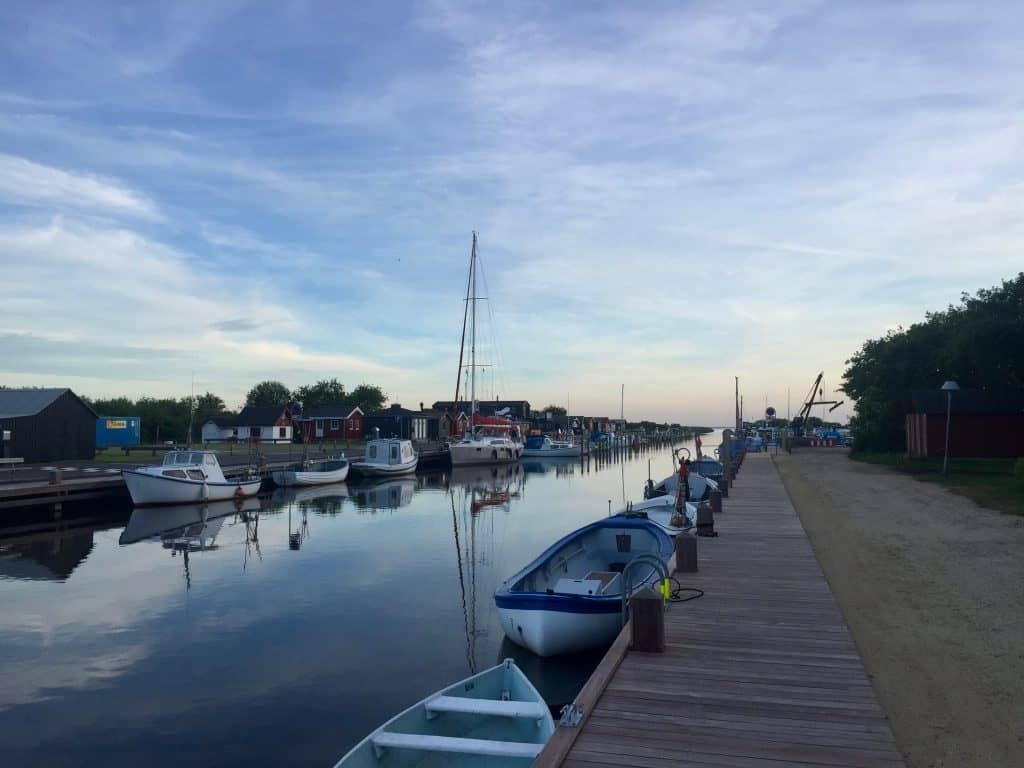
Antipole in Stauning harbour 
Malting floor 
Whisky stills 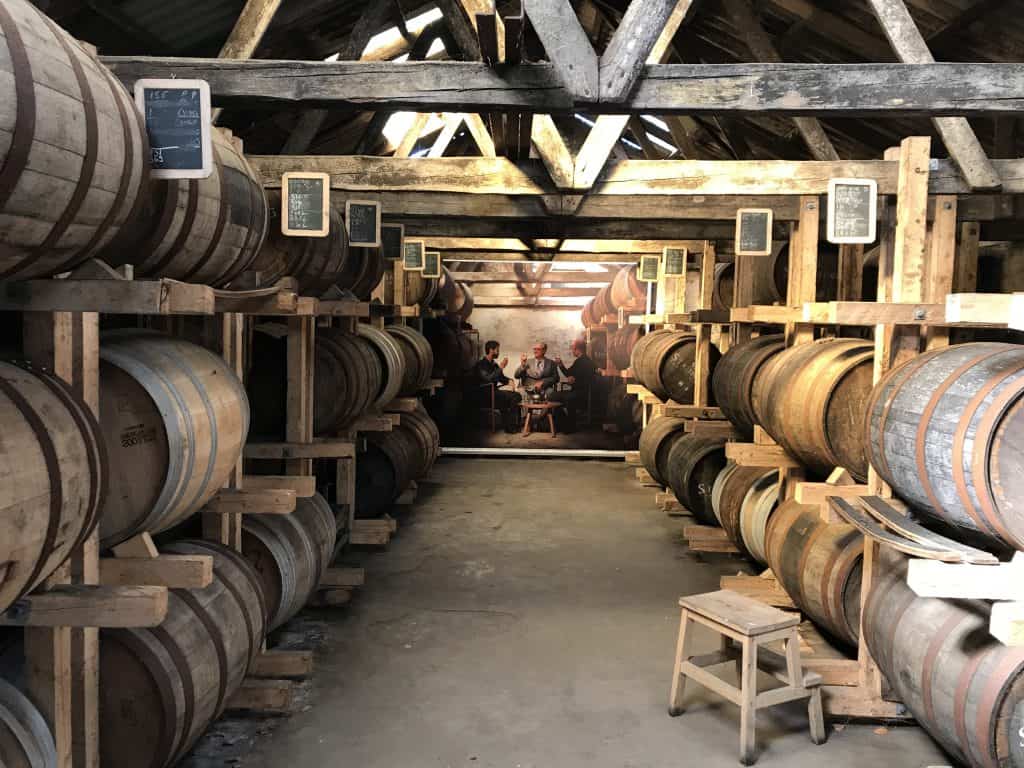
Whisky ageing 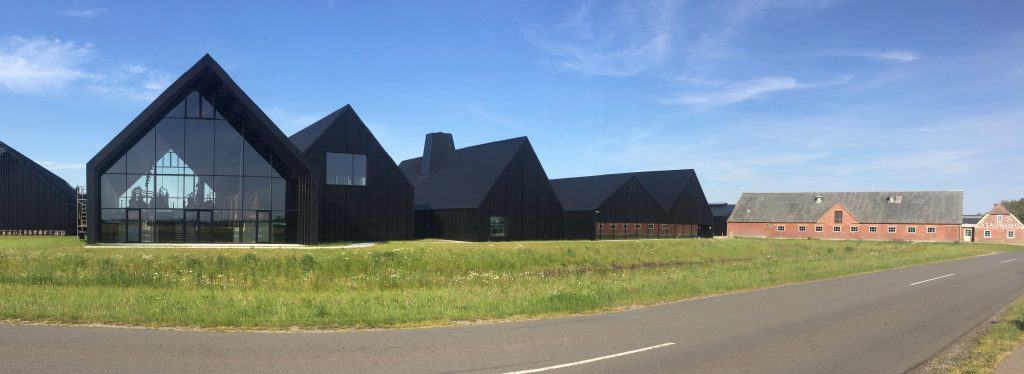
The new distillery
Bork
From Stauning we sailed 8nm to the harbour of Bork – not quite so shallow as Stauning and with an easier entrance. Bork lies at the southernmost point of the Ringkøbing Fjord.
From Bork we beat up the fjord to Hvide Sande to lock out into the North Sea. There we found the lock has problems and one of the gates had been removed. It was only possible to open the other gate when the sea outside was at the same hight as the fjord inside and there was doubt whether the levels would be right on the day, when the weather would allow us to proceed. In the event, we were allowed through and we decided to grab the opportunity to sail straight on to Esbjerg 50nm south.
Esbjerg
Esbjerg shelters behind the island of Fanø, the northern-most of the sandy Frisian Islands that line the coast for 250 miles all the way down the German Bight to the mouth of the River Elbe and then westwards along the German and Dutch coasts to Den Helder.
Until the construction of the port started in 1868, Esbjerg comprised just a couple of farms. Since then it has become the major North Sea port for Denmark. In recent years it has been the centre for the Danish off-shore oil and gas industry and now the base for the wind-farms – the largest in the world. The harbour has many rig ships that can lift themselves up on their legs. The size of these things up close is mind-blowing. The town itself if dominated by the port and its off-shore industries.
Weather challenges
The weather is being difficult. Denmark is getting very strong winds – the tail-end of the heat wave effecting much of Europe.
To progress further we need to avoid strong westerlies that make the seegats (the entrances into shelter behind the islands) hazardous. As of writing this, we are facing over a week of strong, often gale-force, westerlies and it looks like we will be pinned down in Esbjerg for the foreseeable future – see the forecast below. At least we are safe in harbour!

That’s the news for now
Tony & Ynskje

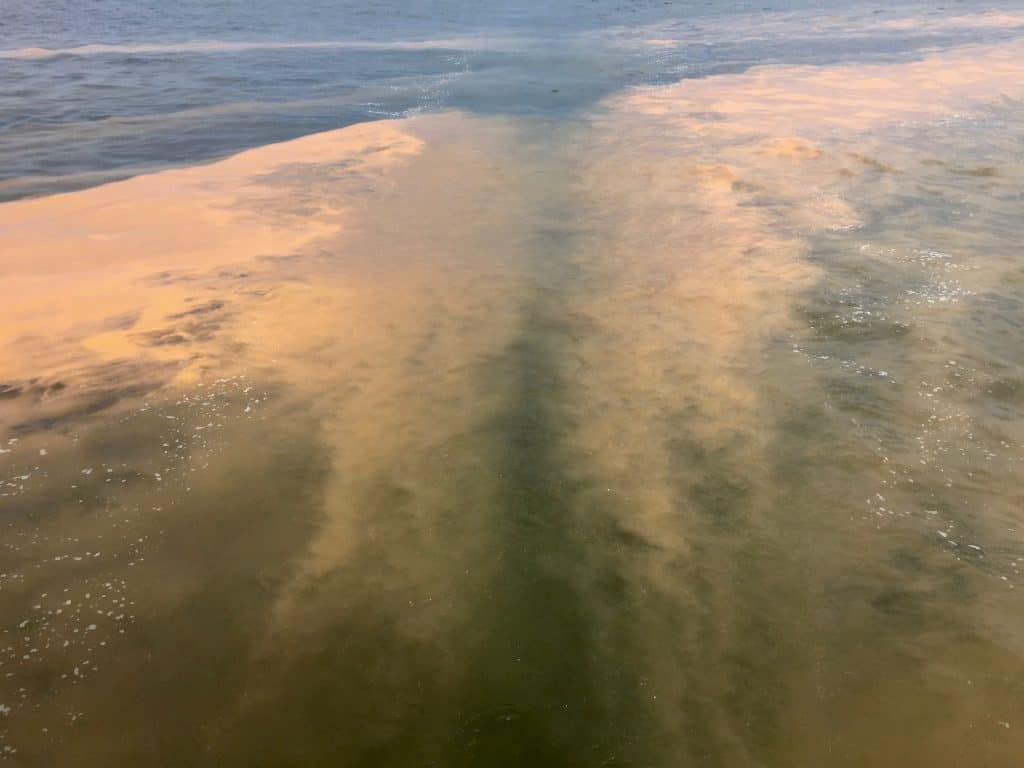

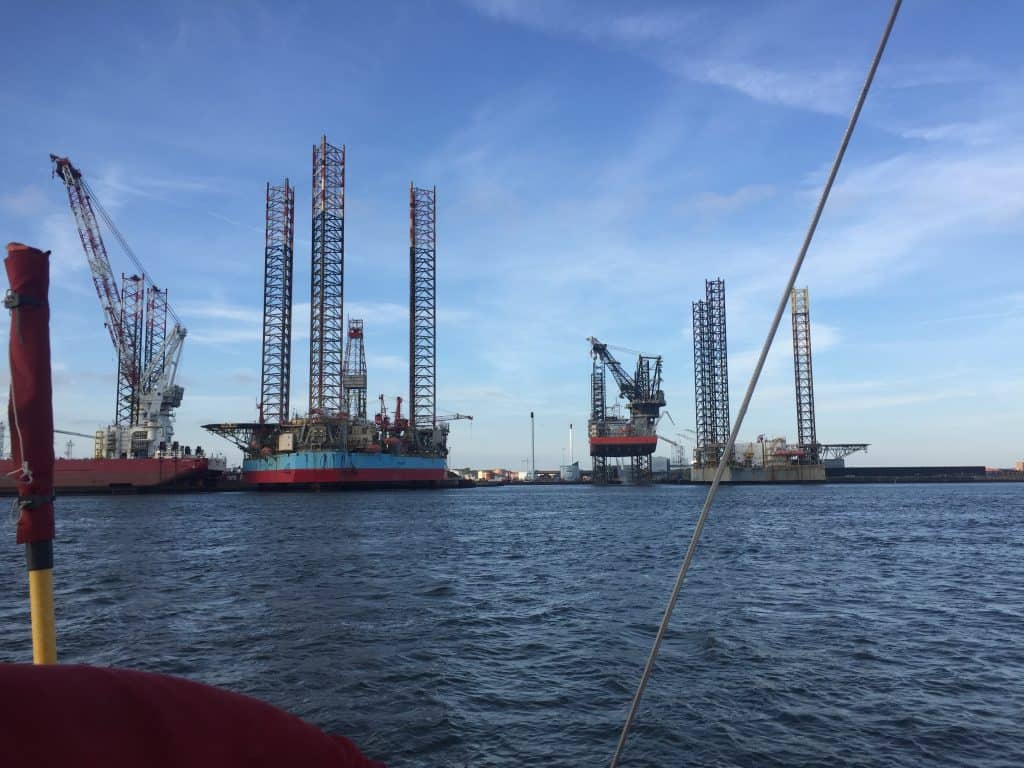
Looks like the suspended sand creates some interesting patterns as you pass through the water. Glad you’re safe for the strong westerly winds this week
Very interesting to read about Stauning Whisky. I think there is a chance that the bottle onboard will not last, while you can always blame the strong winds! Take care!
Hi sailors in Denmark!
Have a safe sail to the Netherlands.
Love, heleen
Enjoy the week as much as you can relaxing. Thanks for the fascinating photos and information.